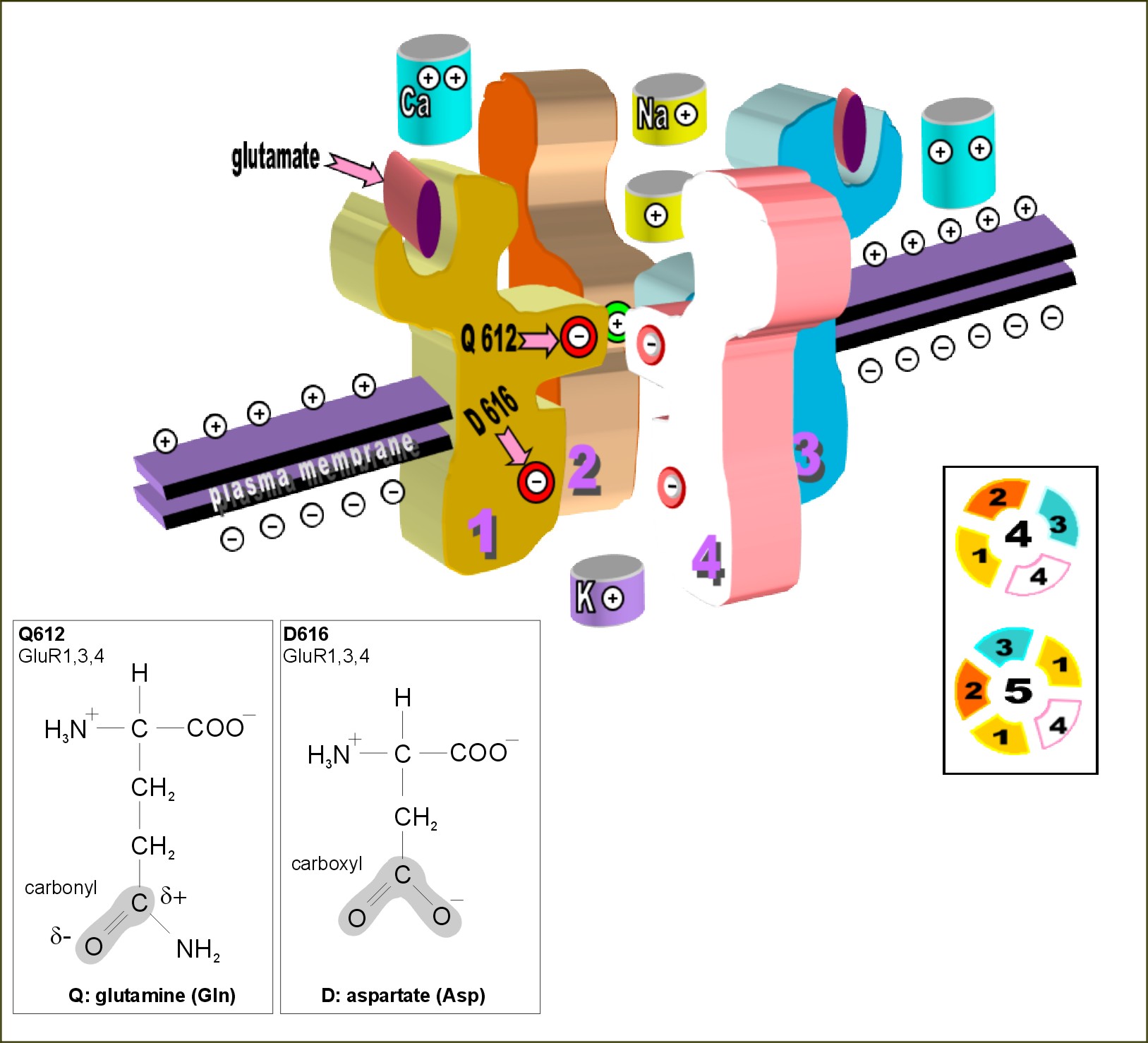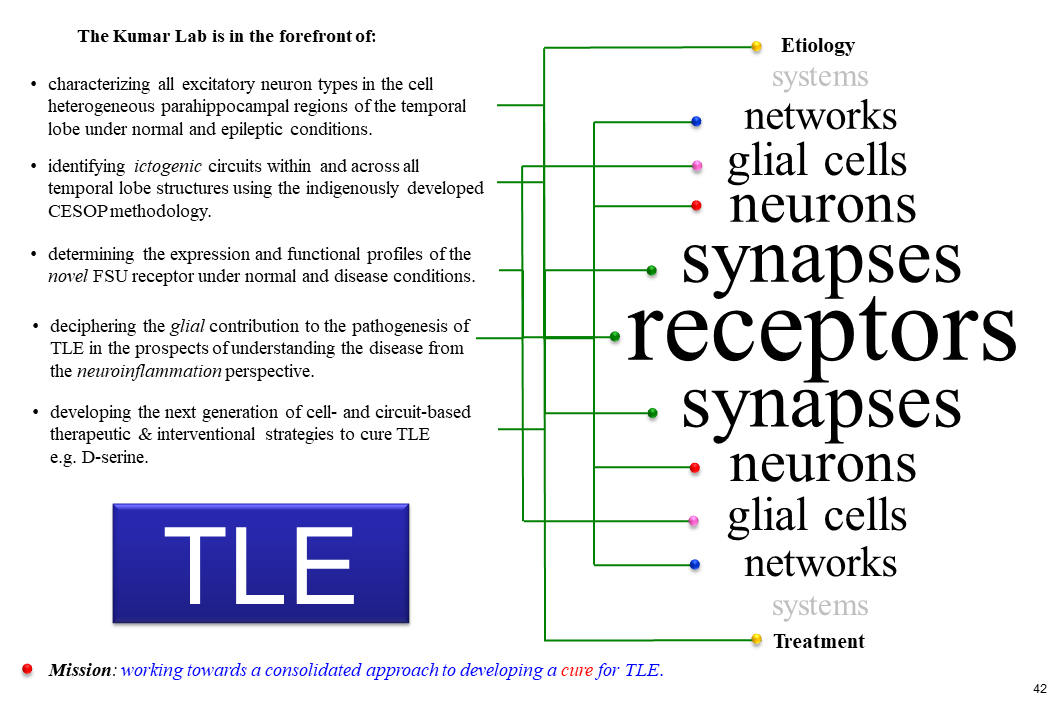Research Overview
Research in my laboratory focuses on cellular physiology of the neocortex both in the context of determining normal neocortical function as well as to gain insights into pathophysiological mechanisms underlying certain aberrant human conditions such as epilepsy.
Basic Research
Functional properties of excitatory synapses and underlying receptors.
Deciphering cortical function is contingent on the availability of detailed information regarding underlying circuitry, its elements, and more importantly its connections. Although a lot is known about the morphology and firing properties of different classes of neocortical excitatory and inhibitory neurons, information about the specific physiology of the various types of synapses, excitatory synapses, in particular, has been noticeably inadequate. One goal of the laboratory is to characterize functional properties of excitatory synapses, especially on principal cells, and to correlate this information in terms of their input specificity, cell-morphology, and underlying receptor (AMPA & NMDA) subunit composition and function. Another goal is to examine the generality of these observations between various regions of the neocortex and laminae and their significance both at the single-cell level and in the broader context of a network. Synthesis of this information would prove instrumental in establishing the cellular basis of sensory and motor processing as well as a grass-roots level understanding of the generation and shaping of receptive fields and activity-dependent plasticity of topographic maps. Our long-term goal is to gather sufficient knowledge to be able to address such issues and eventually to determine the rules of computation within these circuits.

An AMPA receptor subunit assembly
Long-lasting changes in synaptic function are generally assumed to be the cellular basis for learning and memory. This form of plasticity has been best studied in the hippocampus where it was first discovered, although it has also been reported in areas of the mammalian CNS including the visual and motor cortex. However, the rules for induction, expression, and maintenance of cortical long-term potentiation (LTP) are not well understood and the precise cellular mechanisms underlying these changes are still at large. Our research attempts to address these issues as a prelude to exploring the intracellular mechanisms of cortical plasticity and its modulatory regulation by endogenous amines.

Mechanisms of synaptic plasticity and its regulation within neocortex.
Translational Research
Basic cellular mechanisms underlying cortical hyperexcitability & Temporal Lobe Epilepsy (TLE).
Another noteworthy endeavor of the laboratory is to apply basic neuroscience research towards the study and understanding of clinically related pathological phenomena such as epilepsy via the identification of basic cellular mechanisms that underlie its pathophysiology. We have discovered for example that excitatory intracortical connections undergo developmental alterations in the phenotype of their receptor subunits roughly coincident with the period during which normal neocortical tissue is most epileptogenic. Although the precise relationships between these changes and epilepsy are yet to be fully investigated, the goal of our research is to eventually provide a cellular basis for neocortical physiology related to cortical hyperexcitability and epilepsy.
Temporal Lobe Epilepsy is the most common type of epilepsy in adults, often intractable to anticonvulsant therapy and one whose pathophysiology is still poorly understood. Historically, studies of TLE have focused on the hippocampus and less attention has been given to the entorhinal cortex, a temporal lobe structure whose role in this syndrome has been recognized relatively recently. We hope to gain further insights into basic cellular mechanisms underlying TLE-related pathophysiology and epileptogenesis within the entorhinal cortex and adjoining structures using a well-defined animal model.

Identification of ictogenic cells & circuits underlying TLE in the parahippocampal region

A functional connectivity diagram of the parahippocampal region
[Click HERE to go to our publications page]
» These areas of investigation provide avenues for both graduate and undergraduate students, to train in state-of-the-art electrophysiological and anatomical techniques, participate in various on-going projects and contribute to the research effort of my laboratory.
[RETURN to main page]

